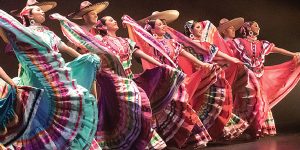 El jueves, 27 de noviembre, muchos celebraron un día de fiesta exclusivamente estadounidense.
El jueves, 27 de noviembre, muchos celebraron un día de fiesta exclusivamente estadounidense.
Por supuesto, otros países en sus respectivas temporadas celebran su cosecha. Y en realidad, muchas de las historias quijotescas sobre los peregrinos y los nativos americanos ceremoniosamente compartiendo la cosecha son apócrifas. Pero la práctica de conmemorar formalmente la gratitud tiene raíces desde tiempos inmemoriales en las culturas indígenas de esta tierra.
Las celebraciones de la cosecha se extienden alrededor del mundo durante distintas épocas del año. Por ejemplo, Japón saluda el trabajo y la acción de gracias anualmente el 23 de noviembre —un día de fiesta nacional conocido como Kinro Kansha no Hi. En Israel, Sukkot, la fiesta de la cosecha judía, que se remonta a la época de Moisés, dura siete días, comenzando en el séptimo mes del calendario hebreo. La población Igbo de Nigeria marca el inicio de la temporada de cosecha en agosto, dando gracias y teniendo un festín con cultivos frescos en el Onwasato. Los alemanes festejan Oktoberfest durante 16 días a principios de otoño.
“La idea de un día de Acción de Gracias ha sido parte del ambiente nativo americano durante siglos”, escribe Tim Giago, nativo de la reserva de Pine Ridge y miembro de la tribu Oglala Lakota. Él recuerda la celebración del Día de Acción de Gracias en las reservas indígenas remotas. Las familias se reunían y compartían una comida. Giago —un columnista del Native Sun News, el cual fundó, y del Huffington Post— escribió que algunas de esas comidas consistían en perros calientes y frijoles, “una comida excepcionalmente buena”, en comparación con la habitual. La mayor parte del tiempo, cenábamos frijoles rojos y arroz, lo cual dice “estábamos agradecidos de tener”.
La gratitud, una virtud cada vez más rara, se encuentra en una lucha monumental con el mercantilismo sobre el Día de Acción de Gracias. El día que hace 151 años nuestra nación dedicó a dar gracias se está convirtiendo progresivamente en un concurso entre celebrar gratitud y comprar. Es una lucha entre simplemente disfrutar de la compañía de los seres queridos e hinchar los bolsillos de las tiendas.
Los horarios agitados de hoy no permiten fácilmente la oportunidad de contemplar de manera consciente y expresar gratitud o de enfocarse en un festín con amigos y familiares sin distracción. ¿Por qué, entonces, hay cada vez más de nosotros dispuestos a rendir el Día de Acción de Gracias ante el materialismo?
Los científicos están aprendiendo que la gratitud es esencial para nuestra salud en general. Y nuestro tiempo para disfrutar la compañía de familiares y amigos es limitado. Ambos son lo suficientemente convincentes para anular cualquier impulso de ceder a los comerciantes la oportunidad excepcional del Día de Acción de Gracias para celebrar todo un día de agradecimiento y seres queridos.
[divider]
Day dedicated to family
This past Thursday, Nov. 27, we observed a uniquely American holiday.
Granted, other countries in their respective seasons celebrate their harvest. And in actuality, many of the quixotic stories about the Pilgrims and Native Ameriacans ceremoniously sharing harvest feasts are apocryphal. But the practice of formally commemorating gratitude has longstanding roots in this land’s indigenous cultures.
Celebrations of the harvest extend over the globe at various times of year. For instance, Japan salutes labor and thanksgiving annually on Nov. 23 – a national holiday known as Kinro Kansha no Hi. In Israel, Sukkot, the Jewish harvest festival dating back to the time of Moses, lasts for seven days, beginning in the seventh month on the Hebrew calendar. The Igbo people of Nigeria mark the start of harvest season in August by giving thanks and feasting on fresh crops at the Onwasato. Germans observe Oktoberfest for 16 days in early autumn.
“The idea of a day of Thanksgiving has been part of the Native American landscape for centuries,” writes Tim Giago, a native of the Pine Ridge Reservation and member of the Oglala Lakota Tribe. Giago recalls the observance of Thanksgiving Day on remote Indian reservations. Families came together and shared a meal. A columnist for the Native Sun News, which he founded, and the Huffington Post, Giago wrote that some such meals consisted of hot dogs and beans, “an exceptionally good meal” compared to the usual fare. Most of the time, they dined on red beans and rice, which he claims, “we were thankful to have.”
Gratitude, an increasingly rare virtue, is engaged in a monumental struggle with commercialism over Thanksgiving Day. The day our nation 151 years ago dedicated to giving thanks is progressively becoming a contest between celebrating gratitude and shopping. It’s a tug-of-war between enjoying the company of loved ones and swelling the coffers of retailers.
Today’s hectic schedules don’t readily allow opportunities to consciously contemplate and express gratitude or focus on feasting with family and friends sans distraction. Why, then, are more of us willing to surrender Thanksgiving Day to materialism?
Gratitude is essential to our overall health, scientists are learning. And our time to delight in the company of family and friends is limited. Both are compelling enough to override any impulse to forfeit to merchants Thanksgiving Day’s exceptional opportunity of a daylong celebration of thanks and loved ones.









